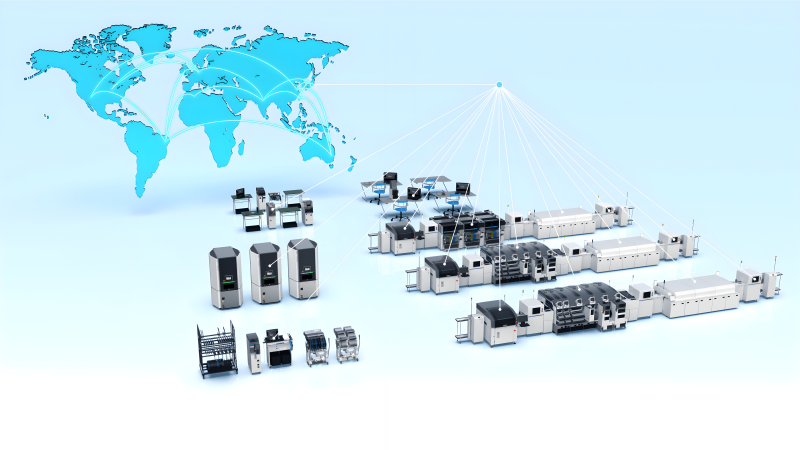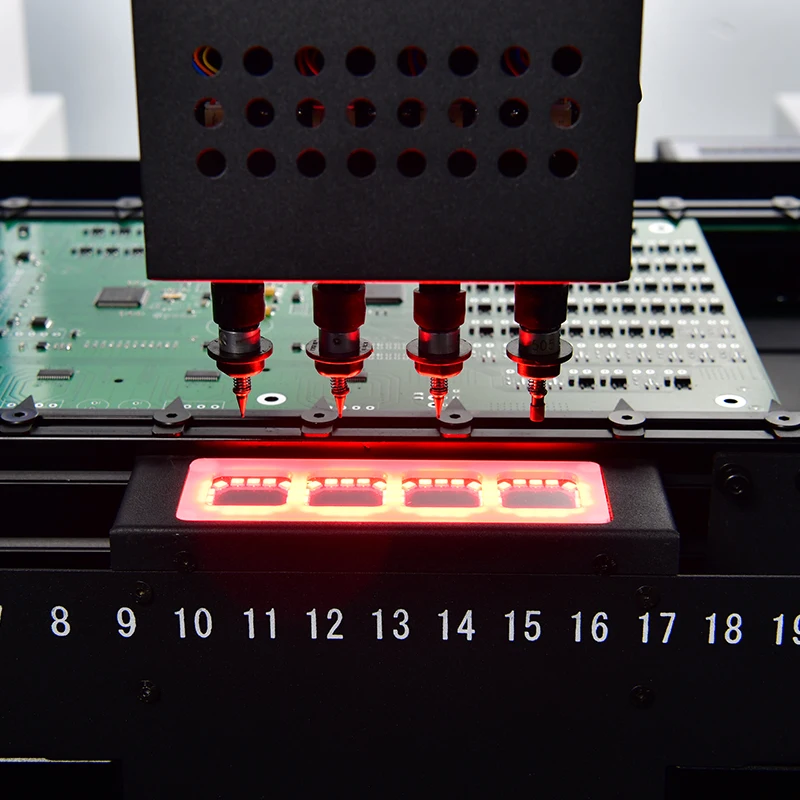Surface-Mount Technology (SMT) equipment plays a critical role in modern electronics manufacturing. Maximizing production efficiency is a key focus for manufacturers aiming to enhance productivity, reduce costs, and maintain high-quality standards. Below, we explore strategies to improve the efficiency of SMT production lines.
Optimize Line Configuration
Efficient production begins with the right configuration of SMT equipment. Factors to consider include:
Machine Placement: Arrange SMT equipment logically to minimize material handling and idle times.
Balanced Workload: Distribute tasks evenly among machines to prevent bottlenecks. For example, ensure the pick-and-place machine’s capacity matches the upstream solder paste printer and downstream reflow oven.
Integrated Solutions: Use connected systems with seamless communication protocols, such as SMEMA, to ensure smooth material flow and reduce delays.

Invest in High-Speed, High-Accuracy Machines
Modern SMT equipment with advanced features can significantly improve production efficiency:
High-Speed Pick-and-Place Machines: These reduce cycle times by handling multiple components simultaneously.
Automatic Optical Inspection (AOI): Early detection of defects prevents rework and reduces overall downtime.
Intelligent Feeder Systems: Minimize setup time and improve accuracy during component placement.
Adopt Automation and Smart Technologies
Automation and Industry 4.0 technologies are essential for increasing efficiency:
Automated Material Handling: Robotic arms and conveyors reduce manual intervention and streamline operations.
Real-Time Monitoring: Use software to track production metrics such as throughput, defect rates, and machine uptime.
Predictive Maintenance: Smart systems can detect potential issues before they cause machine downtime, ensuring continuous operation.
Regular Maintenance and Calibration
Efficient machines depend on proper maintenance:
Scheduled Maintenance: Follow the manufacturer’s maintenance schedule to prevent unexpected breakdowns.
Calibration: Regularly calibrate equipment to maintain placement accuracy and soldering quality.
Spare Parts Availability: Keep critical spare parts in stock to minimize repair times.
Minimize Changeover Times
Frequent changeovers can disrupt production. Strategies to reduce this include:
Quick-Change Stencils and Feeders: Use tools that allow for faster adjustments.
Pre-Programmed Recipes: Store settings for different production runs to speed up line reconfiguration.
Dedicated Setup Teams: Assign a team to handle changeovers efficiently, reducing downtime between jobs.

Improve Operator Training
Skilled operators can significantly influence SMT line efficiency:
Comprehensive Training Programs: Teach operators how to optimize machine settings and troubleshoot issues.
Certification Programs: Ensure operators are certified to handle specific equipment and tasks.
Continuous Learning: Offer refresher courses to keep staff updated on new technologies.
Focus on Process Optimization
Streamline the entire SMT process to reduce waste and improve yield:
Solder Paste Printing: Ensure uniform solder paste application through real-time inspection and closed-loop control systems.
Placement Accuracy: Use high-resolution cameras and intelligent algorithms to improve component placement precision.
Reflow Profiling: Optimize temperature profiles in the reflow oven to ensure consistent solder joint quality.
Data-driven decisions can enhance efficiency:
Data-driven decisions can enhance efficiency:
Performance Metrics: Analyze machine performance to identify areas for improvement.
Defect Analysis: Use data from AOI and SPI machines to detect patterns in defects and implement corrective actions.
Yield Reports: Track first-pass yield (FPY) rates and adjust processes to improve outcomes.
Reduce Material Waste
Efficient material usage not only saves costs but also ensures smoother operations:
Component Management: Use smart feeders to minimize component loss.
Inventory Control: Implement just-in-time (JIT) practices to avoid overstocking and material obsolescence.
Partner with Reliable Suppliers
Reliable suppliers ensure consistent machine performance and spare part availability. Choose suppliers who offer:
High-Quality Equipment: Machines with low failure rates and long lifespans.
Comprehensive Support: Prompt technical assistance and training programs.
Upgrades and Updates: Access to the latest technologies to stay competitive.
Conclusion
Improving the production efficiency of SMT equipment requires a combination of advanced technology, optimized processes, skilled personnel, and proactive maintenance. By adopting these strategies, manufacturers can reduce costs, enhance throughput, and deliver higher-quality products, staying competitive in the fast-paced electronics industry.










